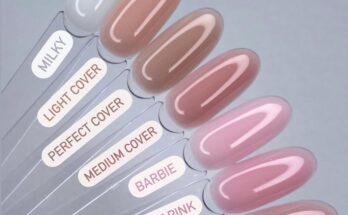When it comes to skincare, especially moisturizers and creams, formulation is everything. Each ingredient plays a unique role in delivering hydration, improving skin texture, and enhancing product stability. Among the many ingredients used in cosmetic formulations, propylene glycol stands out as one of the most versatile and essential components. It’s often found in a wide range of personal care products—from facial creams to body lotions—thanks to its multifunctional properties.
Despite being synthetic, propylene glycol is FDA and CIR approved as safe, making it a widely used, multifunctional ingredient in countless skincare and cosmetic products.
Humectant Properties: Attracting and Retaining Moisture
One of the primary reasons propylene glycol is used in moisturizers and creams is its role as a humectant. Water molecules from the surroundings can be drawn to it and bound to the skin by it. This function is crucial for maintaining skin hydration, especially in dry or arid conditions.
When incorporated into a cream, propylene glycol helps create a protective barrier that prevents water loss. This leads to smoother, more supple skin. In this way, it not only hydrates the skin but also improves the overall sensory experience of the product—making creams feel more luxurious and less greasy.
Enhancing Penetration and Absorption
Propylene glycol also acts as a penetration enhancer. It facilitates the delivery of other active ingredients into the skin by modifying the skin’s barrier properties. For products that contain vitamins, antioxidants, or anti-aging agents, this can be especially helpful because it guarantees that these ingredients get to the deeper layers of the skin where they can work best.
Propylene glycol contributes to the bioavailability of other formulation elements by improving absorption. This synergistic effect maximizes the performance of moisturizers and creams without requiring high concentrations of actives, which can sometimes lead to irritation.
Improving Texture and Stability
In addition to its moisturizing and enhancing capabilities, propylene glycol plays a technical role in product formulation. It acts as a solvent for both water-soluble and some oil-soluble ingredients, which aids in creating stable emulsions. Its inclusion helps maintain an even consistency and prevents the separation of ingredients over time.
Furthermore, propylene glycol has mild antimicrobial properties, which contribute to the preservation of the product. Although not a primary preservative, it can support the efficacy of other antimicrobial agents, thereby extending shelf life and ensuring product safety.
Skin Compatibility and Safety
Concerns about propylene glycol often stem from its synthetic nature and potential for skin irritation. However, in skincare formulations, it is typically used in low concentrations that are well tolerated by most skin types. It is non-comedogenic (does not clog pores) and hypoallergenic, making it suitable for sensitive and acne-prone skin.
However, like with any substance used in cosmetics, some people may be sensitive or have adverse responses.
Why Formulators Prefer Propylene Glycol
From a formulator’s perspective, propylene glycol offers several advantages. Its ability to serve multiple functions—moisturizing, stabilizing, preserving, and enhancing penetration—makes it cost-effective and efficient. It also blends well with a variety of other ingredients, ensuring compatibility across different product types and skin care categories.
These qualities have made propylene glycol a key component for any propylene glycol supplier aiming to support innovation in cosmetic product development. Its widespread use is not a result of industry habit, but rather of proven performance backed by decades of research and user experience.
Choosing the Right Products
As consumers become more ingredient-conscious, the presence of propylene glycol in a moisturizer or cream should be viewed not with suspicion, but with understanding. When used responsibly by a skilled chemical supplier, propylene glycol significantly enhances the functionality and feel of skincare products.
Whether you are seeking hydration, improved absorption of actives, or a lightweight texture, products containing this ingredient are often better equipped to meet your skincare needs. Knowing its role allows you to make informed choices and appreciate the science behind the soothing cream you apply every day.




